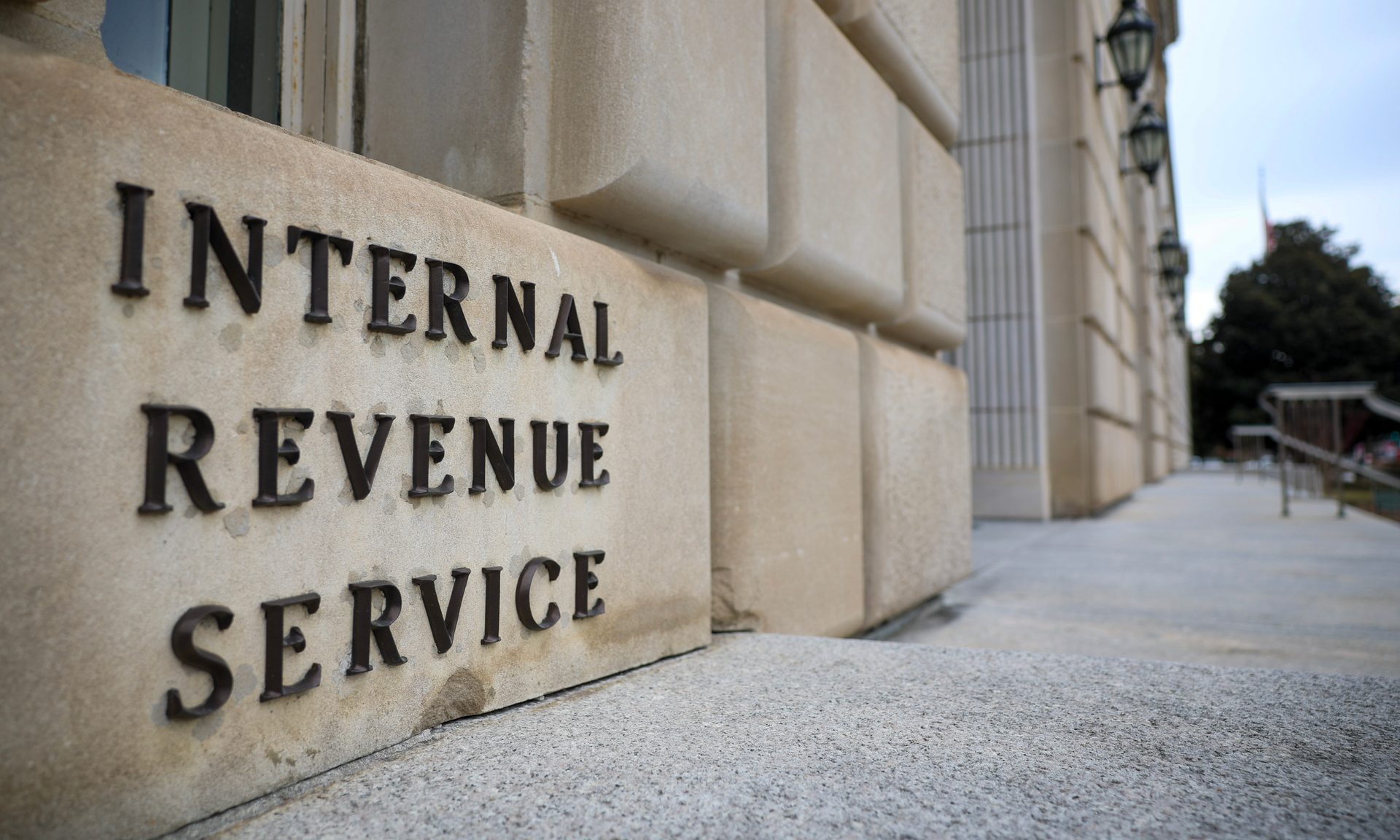The GOP Megabill: What Taxpayers Should Know
The “big, beautiful bill” extends many tax cuts enacted during the first Trump administration in 2017 — and adds new ones. Here are some key provisions taxpayers need to know.

Many, or all, of the products featured on this page are from our advertising partners who compensate us when you take certain actions on our website or click to take an action on their website. However, this does not influence our evaluations. Our opinions are our own. Here is a list of our partners and here's how we make money.
The sprawling budget bill signed into law by President Donald J. Trump on July 4 after it squeaked through Congress has many far-reaching effects for consumers, as well as for the economy at large. Taxes top the list.
The almost 900-page “big, beautiful bill” has plenty to say about taxes, and an array of changes, new credits and deductions are part of the new bill. But at its heart, the bill is about extending the tax provisions passed under the Tax Cuts and Jobs Act (TCJA) of 2017, during Trump’s first administration.
Many 2017 tax cuts now permanent
“You know, everyone's focused on changing this and changing that, but the main point of this law was to extend or make permanent a lot of the provisions that were in the 2017 Tax Cuts and Jobs Act,” says Evan Morgan, a CPA and principal in tax advisory services at Kaufman Rossin, a Miami-based accounting firm.
The clock was ticking on many of the 2017 changes, which were set to revert to earlier levels at the end of 2025.
“They were due to expire and go back to a higher rate,” Morgan says. “They said, ‘No, no, we’re going to make that permanent.’”
Meet MoneyNerd, your weekly news decoder
So much news. So little time. NerdWallet's new weekly newsletter makes sense of the headlines that affect your wallet.
Tax brackets
In tax year 2017, tax rates ranged from 10% to 39.6%. The TCJA lowered the top rate, for top earners, to 37%. That range is now made permanent in the “big, beautiful bill,” which also makes provisions to adjust certain income thresholds — or brackets — for inflation in future years.
Standard deduction
Increases in the standard deduction enacted in 2017 were also due to expire, and the new bill not only makes them permanent, but raises them again and makes them active in tax year 2025 (for taxes filed in 2026).
The new standard deduction levels are:
- Single filers and married filing separately: Increases from $15,000 to $15,750.
- Married filing jointly: Increases from $30,000 to $31,500.
- Heads of household: Increases from $22,500 to $23,625.
In tax year 2017, before the TCJA, standard deductions were $6,350 for individuals, $12,700 for those married filing jointly and $9,350 for heads of household.
State and local tax deduction
Before the TCJA, there was no cap on the amount a taxpayer could deduct for certain state and local taxes paid. The 2017 act set a $10,000 cap, set to expire at the end of 2025 — and then revert to no cap.
The new bill sets a new cap at $40,000 in tax year 2025, rising 1% to $40,400 in 2026. In tax year 2029, it reverts to $10,000.
The state and local (SALT) deduction is available only for taxpayers who itemize rather than take the standard deduction, and there are limitations for high earners. Still, it can be worth exploring, particularly for homeowners.
“Even in a non-tax state like Florida, it doesn't take that expensive of a home to get you to $10,000 in property taxes,” Morgan says. “Now that limit has been raised from 10 to 40.”
Child tax credit
In 2017, the TCJA temporarily raised the maximum child tax credit from $1,000 to $2,000. The credit was due to revert to $1,000 at the end of this year. The legislation raises the maximum credit to $2,200 for the current year, adjusts it for inflation going forward, and makes it permanent.
What’s new in the ‘big, beautiful bill’?
Senior deduction
During his campaign, Trump pledged to eliminate income taxes some Americans over 65 pay on their Social Security benefits. Instead, the bill adds a new deduction for qualifying taxpayers:
- $6,000 for eligible individuals.
- $12,000 for married couples filing jointly if both spouses are 65 or older.
The deduction is temporary, ending after tax year 2028, and is layered on top of the standard deduction available to all taxpayers and the additional senior standard deduction. To get the full deduction, eligible taxpayers must have $75,000 or less in modified adjusted gross income ($150,000 or less for joint filers).
No taxes on tips/overtime
Trump also campaigned on ending taxes on tips and overtime, and the new legislation enacts both pledges — temporarily. Unless Congress takes further action, these provisions will expire after tax year 2028. Both take effect this tax year (for taxes filed in 2026).
On tips:
- Taxpayers will be allowed to deduct up to $25,000 in “qualified” tips from their income.
- Tipped workers will still be on the hook for payroll taxes, which fund Social Security and Medicare.
- There are limitations on industries included, as well as a gradual phaseout of the deduction above certain modified adjusted gross income thresholds ($150,000 for individuals; $300,000 for couples).
On overtime:
- Taxpayers will be allowed to deduct up to $12,500 against their overtime pay. This doubles to $25,000 for qualified joint filers.
- The deduction applies to any amount paid over the worker’s base pay.
- The deduction is reduced after the same thresholds as the tips provision.
Deduction for car loan interest
This deduction is designed to boost U.S. auto manufacturing, so there are built-in limits on qualifying. This deduction is available starting in tax year 2025 (taxes filed in 2026) and expires after tax year 2028.
The basics:
- Taxpayers can write off up to $10,000 a year in interest paid on qualifying auto loans.
- Taxpayers don’t have to itemize to claim the deduction.
The restrictions:
- The car must be new and purchased after Dec. 31, 2024.
- The car must be assembled in the United States.
- The deduction is reduced — potentially down to $0 — for individuals earning more than $100,000 per year (or joint filers earning more than $200,000).
Tax breaks for small businesses
There are numerous tax provisions in the bill that affect businesses of all sizes, including small businesses.
“The two biggest ones that we're going to deal with is the restoration of bonus depreciation and the enhancement of Section 179 expense for businesses that buy fixed assets,” says Morgan, who specializes in working with small businesses.
Changes to the bonus depreciation will allow businesses to deduct 100% of the cost of new “qualified property” (certain kinds of machinery and other “short-lived” assets) acquired after Jan. 19, 2025.
The TCJA set a 100% deduction back in 2017, but it began phasing out in 2022. Before the latest changes, the deduction would have been 40% in the current tax year.
“So in other words, if I spent a million dollars on things like computers and desks and chairs and furniture and fixtures, as a business, I was only going to get a 40% bonus appreciation deduction in 2025,” Morgan says. “That has now been changed retroactively … and it's gone back to 100%. So that's going to be pretty big.”
Section 179 allows businesses to deduct the cost of certain assets at full value, rather than a depreciated cost. The “big, beautiful bill” raises the limit for this kind of deduction from $1 million to $2.5 million.
There are many more changes that have impacts for business owners, and there are nuances to the two changes listed above. For details, business owners should consult with a tax advisor.
Good news for online sellers
Morgan did highlight one additional change that will be of interest to those who sell items online through platforms like Etsy, Venmo and eBay.
The threshold for reporting sales was reduced to $600 annually in the American Rescue Plan of 2021, though implementation of the new limit had been delayed.
The new budget bill reinstates the previous reporting limits of $20,000 and 200 transactions.
What’s going away?
While the “big, beautiful bill” is almost entirely focused on cutting taxes, some tax credits are going away — primarily in the realm of clean energy.
- The $7,500 federal tax credit for purchasing a new electric vehicle and the $4,000 tax credit for purchasing used EVs, will both end on Sept. 30, 2025.
- Two clean energy tax credits, which together allow homeowners to claim a tax credit for rooftop solar, geothermal heat pumps or other green energy devices, will end after 2025.
A lot of changes — with a smaller IRS
Many new tax changes will require the IRS to develop new internal rules and guidelines — at a time when the agency is rapidly losing staff and funding. As part of the new administration’s push to trim the federal workforce, the IRS workforce has already decreased by more than 25% and further cuts are planned.
Meet MoneyNerd, your weekly news decoder
So much news. So little time. NerdWallet's new weekly newsletter makes sense of the headlines that affect your wallet.
Frequently Asked Questions
Who benefits the most from the tax changes?
According to the Penn Wharton Budget Model and other analyses, benefits of making the current tax structure permanent will largely be enjoyed by the wealthiest Americans, particularly those in the top 0.1% of earners.
How much will tax changes add to the deficit?
Estimates vary somewhat, but there is general agreement that the bill overall will add $3 trillion to more than $4 trillion to the national debt over 10 years.
The lower revenues set in motion by tax changes in the bill will be offset somewhat by huge cuts to social programs like Medicaid. The nonpartisan Committee for a Responsible Federal Budget estimates the bill will add $400 billion to $632 billion to the annual deficit through 2034.
Article sources
NerdWallet writers are subject matter authorities who use primary,
trustworthy sources to inform their work, including peer-reviewed
studies, government websites, academic research and interviews with
industry experts. All content is fact-checked for accuracy, timeliness
and relevance. You can learn more about NerdWallet's high
standards for journalism by reading our
editorial guidelines.
Related articles






